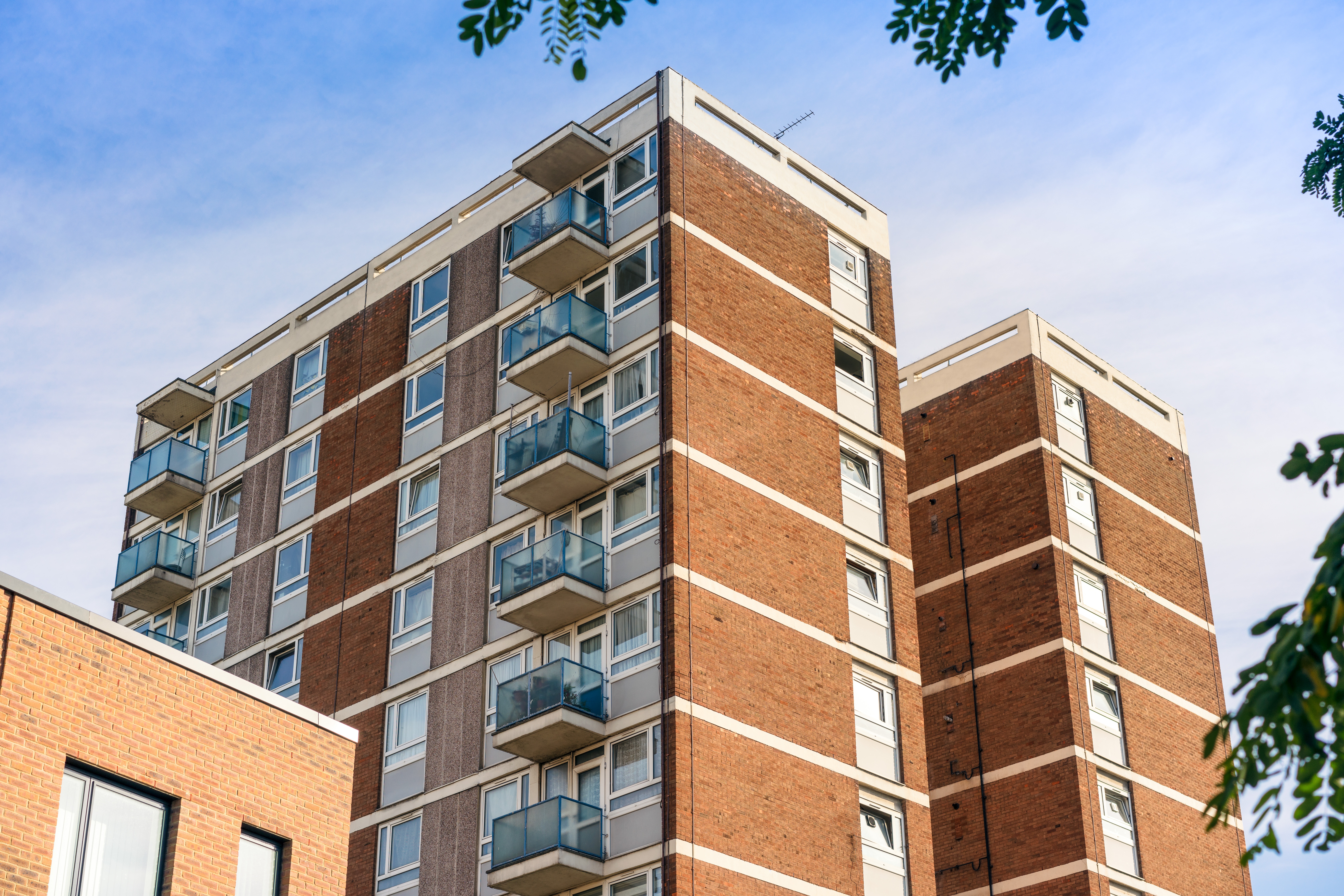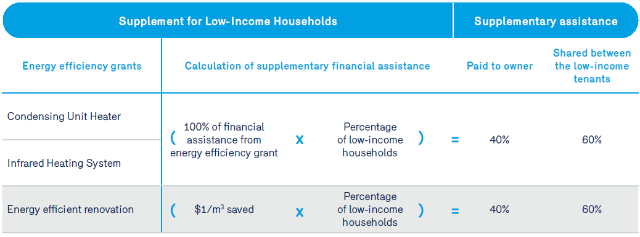Energy efficiency program – LIH support
Low-income household supplement component –Business
Énergir offers additionnal assistance to two types of low-income household (LIH) customers:
- Owners of rental properties occupied by low-income households.
- Social and community organizations (housing co-ops, municipal housing authorities, low-income housing and organizations serving disadvantaged clients).
Which programs are available to LIH ?
Receive additional assistance* for energy effiency grants available in the following programs:

Grant – LIH support
Receive up to double the grant offered
For rental property owners
The additional amount is determined according to the energy efficiency program component you participate in, and also takes into account the percentage of low-income households living in the building. For example, if two low-income households live in a ten-unit building, the basic financial assistance would be increased by 20%. This supplement is then divided between the owner of the building (40% of the supplement) and the low-income households living in the building (60% of the supplement).1

Example
The owner of a building with six units, three of which are occupied by low-income households, purchases a condensing unit heater for the building. He is entitled to a $2,900 grant for the purchase and installation of the unit heater, as well as the bonus offered under the LIH program. The LIH supplement is calculated as follows:

For housing co-ops and non-profits
To support them in helping disadvantaged clients, housing co-operatives are automatically eligible for double the grant amount usually offered, depending on the energy efficiency program component they participate in.
The table below shows the different income thresholds by household size. To be considered a low-income household, family income must be equal to or less than the amount shown in the table.

Current or future Énergir customers who meet one of the following conditions:
- Own a rental property with four or more units occupied by low-income tenants
- Be a non-profit or housing co-op
- Be a non-profit, community-based social organization that helps disadvantaged clients
In addition, you must participate in one of the energy efficiency components mentioned in the list of eligible programs or in the program’s Participant’s Guide.
Note
- Non-profit housing organizations such as low-income housing may also be eligible for financial assistance under certain conditions. We encourage them to contact their Énergir sales representative.
- Owners of triplexes, duplexes, condos and single-family homes can also participate in the residential version of the program.
Owner of a multi-unit property with one or more units occupied by a low-income household:
- The owner must first participate in an Énergir energy efficiency program.
- See the Participant’s Guide for eligibility criteria and any additional program information.
- Then submit your application to participate under Énergir’s Supplement – Low-income households (Form I) component before beginning work on the energy efficiency component you are participating in at [email protected].
- Énergir will send you an information document on the Supplement – Low-income households component to share with your tenants and a personalized letter inviting them to participate.
- Énergir receives applications from tenants and verifies their eligibility.
- Énergir issues a conditional confirmation of additional financial assistance to the owner.
- Complete the project and submit any documents required for the energy efficiency component.
- Énergir reviews the application and confirms the additional financial assistance to the owner.
- Énergir pays the additional financial assistance to the owner and low-income tenants.
Available grant programs
Efficient Appliances - Business
Energy audit and implementation
- Study and implementation
- Recommissioning
- Energy management system
- Optimizing boiler systems
- Steam trap maintenance
Efficient construction and renovation
Renewable energy
Low-income household Support
Terms
1 You must complete and submit your APPLICATION TO PARTICIPATE UNDER THE SUPPLEMENT – LOW-INCOME HOUSEHOLDS COMPONENT (FORM I) before beginning work on the energy efficiency program you are participate in. The start of work is the date of signing of the first contract to carry out the project. Énergir reserves the right to:
- Modify or terminate the program without notice.
- Interpret the terms and conditions of the program.
- Limit the number of projects once the budget for the program is exhausted.
2 The calculation presented assumes that all low-income households agree to participate in the program and provide proof of income. The amount awarded will depend on the number of low-income households participating at this stage.